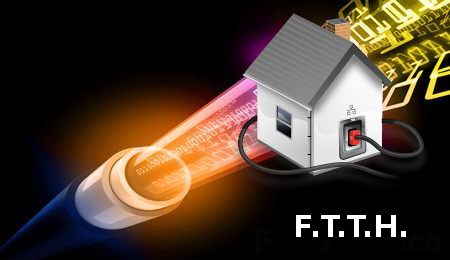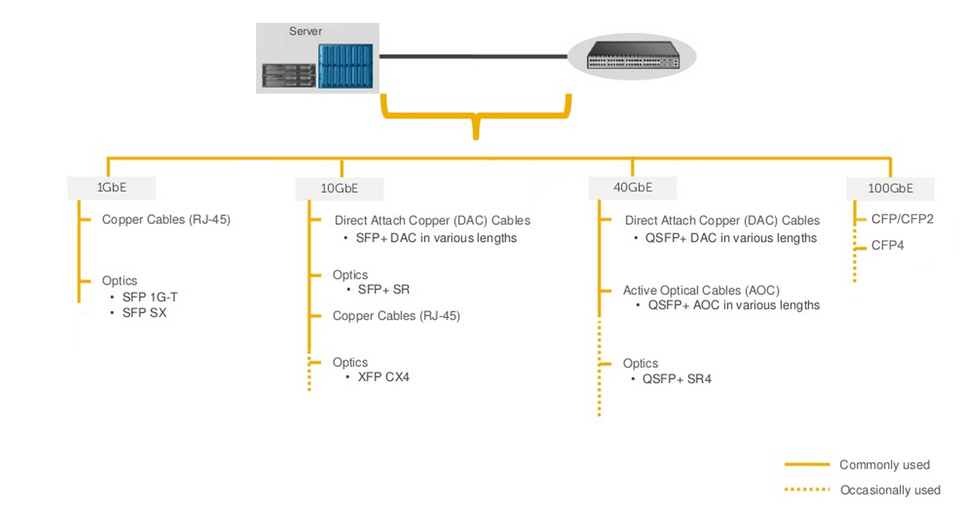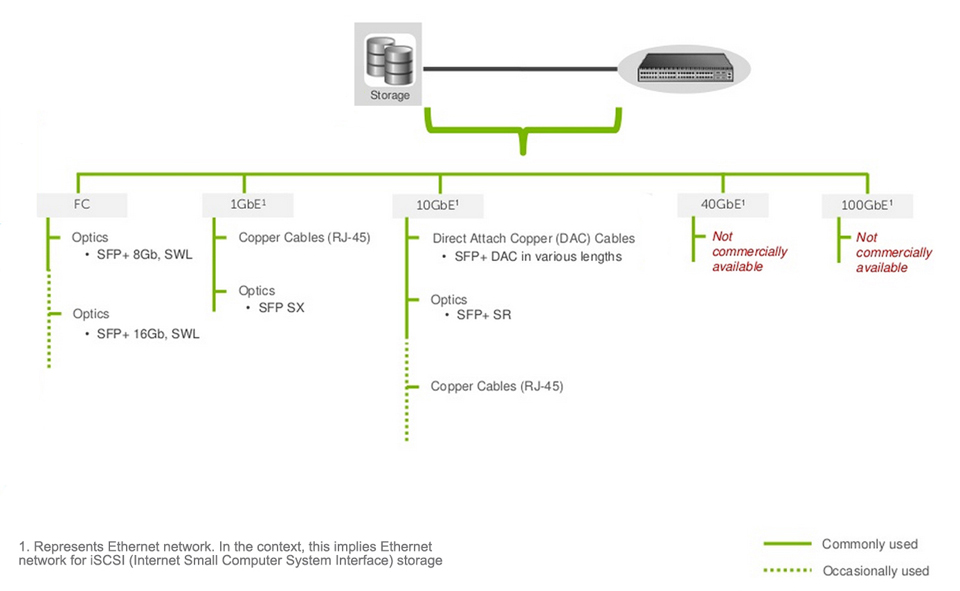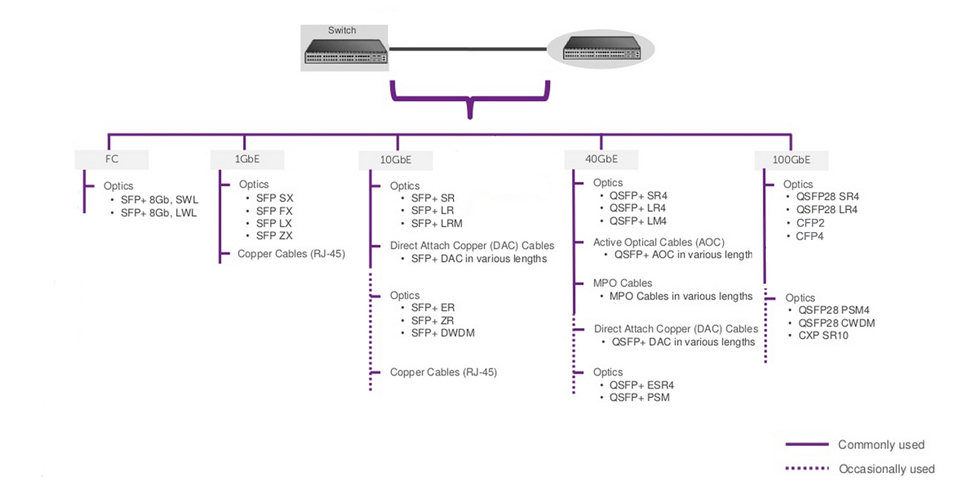The Composition and Classification of Fiber Optic Cables
To satisfy optical, mechanical and environmental performances and specifications, fiber optic cable was born. The fiber optic cable uses one or more fibers that placed in the sheath as the transmission medium. Accompanied by the continuous advancement of network technology, fiber optic cable constantly participates in the construction of telecommunications networks, the construction of the national information highway, Fiber To The Home (FTTH) and other occasions for large-scale use. Although fiber optic cable is still more expensive than other types of cable, it's favored for today's high-speed data communications because it eliminates the problems of twisted-pair cable and so fiber optic cable is still a good choice for people. But how to really get a good performance, state-of-the-art products, we need to understand some basics to identify the types of fiber optic cables.
Fiber optic cable consists of the core, the cladding and the coating. The core is a cylindrical rod of dielectric material. Dielectric material conducts no electricity. Light propagates mainly along the core of the fiber. The core is generally made of glass. The core is described as having a radius of (a) and an index of refraction n1. The core is surrounded by a layer of material called the cladding. Even though light will propagate along the fiber core without the layer of cladding material, the cladding does perform some necessary functions. (The basic structure of an optical fiber is shown in the following figure.)
The size of the optical fiber is commonly referred to by the outer diameter of its core, cladding and coating. Example: 50/125/250 indicates a fiber with a core of 50 microns, cladding of 125 microns, and a coating of 250 microns. The coating is always removed when joining or connecting fibers. A micron (µm) is equal to one-millionth of a meter. 25 microns are equal to 0.0025 cm. (A sheet of paper is approximately 25 microns thick).
Besides the basics, Fiber optic cables can be classified by other ways.
- Multi-Mode Fiber (MMF) Cable: Center glass core is coarse (50 or 62.5 µm). It can transmit a variety of patterns of light. However, because its dispersion is large, which limits the frequency of the transmitted digital signal, and with increasing distance, the situation will be more serious. For example, 600Mb/km of 2km fibers provide the bandwidth of only 300 Mbps. Therefore, MMF cable's transmission distance is relatively short, generally only a few kilometers. General MMF patch cables are in orange, also some are gray, joints and protection are beige or black.
- Single-Mode Fiber SMF Cable: Center glass core is relatively fine (core diameter is generally 9 or 10 µm), only one mode of light transmission. Therefore, the dispersion is very small, suitable for remote communication, but it plays a major role in the chromatic dispersion, so that SMF cable has a higher stability requirement to the spectral width of the light source, just as narrower spectrum width, better stability. General SMF patch cables are in yellow, with joints and cases in blue.
- Simplex Cable: Single strand of fiber surrounded by a 900µm buffer then a layer of Kevlar and finally the outer jacket. Available in 2 mm or 3 mm and plenum or riser jacket. Plenum is stronger and made to share in fire versus riser is made to melt in fire. Riser cable is more flexible.
- Duplex Cable: Two single strands of fiber optic cable attached at the center. Surrounded by a 900µm buffer then a layer of Kevlar and finally the outer jacket. In data communications, the simultaneous operation of a circuit in both directions is known as full duplex; if only one transmitter can send at a time, the system is called half duplex.
- Central Tube Cable: Fiber, optical fiber bundles or fiber optic cable with no stranding directly into the center position.
- Stranded Tube Cable: A few dozens or more root fiber or fiber tape unit helically stranded around the central strength member (S twist or SZ twisted) into one or more layers of fiber optic cable.
- Skeleton After Tube Cable: Fiber or fiber after spiral twisted placed into the plastic skeleton cable slot.
- Aerial Cable: Aerial cables are for outside installation on poles. They can be lashed to a messenger or another cable (common in CATV) or have metal or aramid strength members to make them self supporting. The cable shown has a steel messenger for support. It must be grounded properly. A widely used aerial cable is optical power ground wire which is a high voltage distribution cable with fiber in the center. The fiber is not affected by the electrical fields and the utility installing it gets fibers for grid management and communications. This cable is usually installed on the top of high voltage towers but brought to ground level for splicing or termination.
- Direct-Buried Cables:
- Armored Cable: Armored cable is used in direct-buried outside plant applications where a rugged cable is needed and/or rodent resistance. Armored cable withstands crush loads well, needed for direct burial applications. Cable installed by direct burial in areas where rodents are a problem usually have metal armoring between two jackets to prevent rodent penetration. Another application for armored cable is in data centers, where cables are installed underfloor and one worries about the fiber cable being crushed. Armored cable is conductive, so it must be grounded properly.
- Breakout Cable: Breakout cable is a favorite where rugged cables are desirable or direct termination without junction boxes, patch panels or other hardware is needed. It is made of several simplex cables bundled together inside a common jacket. It has a strong, rugged design, but is larger and more expensive than the distribution cables. It is suitable for conduit runs, riser and plenum applications. It's perfect for industrial applications where ruggedness is needed. Because each fiber is individually reinforced, this design allows for quick termination to connectors and does not require patch panels or boxes. Breakout cable can be more economic where fiber count is not too large and distances are not too long, because it requires so much less labor to terminate.
- Submarine Cable: Submarine cable is the cable wrapped with insulating materials, laying at the bottom of the sea, to set up a telecom transmission between countries.
- Tight Buffered Cable: Multiple color coded 900µm tight buffered fibers can be packed tightly together in a compact cable structure, an approach widely used indoors, these cables are called tight buffered cables. Tight buffered cables are used to connect outside plant cables to terminal equipment, and also for linking various devices in a premises network. Multi-fiber tight buffered cables often are used for intra-building, risers, general building and plenum applications. Tight buffered cables are mostly built for indoor applications, although some tight buffered cables have been built for outdoor applications too.
- Loose Tube Cable: On the other hand multiple (up to 12) 250µm coated fibers (bare fibers) can be put inside a color coded, flexible plastic tube, which usually is filled with a gel compound that prevents moisture from seeping through the hollow tube. Buffer tubes are stranded around a dielectric or steel central member. Aramid yarn are used as primary strength member. Then an outer polyethylene jacket is extruded over the core. These cables are called loose tube cables. Loose tube structure isolates the fibers from the cable structure. This is a big advantage in handling thermal and other stresses encountered outdoors, which is why most loose tube fiber optic cables are built for outdoor applications. Loose-tube cables typically are used for outside-plant installation in aerial, duct and direct-buried applications.
- Indoor Cable: Such as distribution cables. Distribution cable is the most popular indoor cable, as it is small in size and light in weight. They contain several tight-buffered fibers bundled under the same jacket with Kevlar strength members and sometimes fiberglass rod reinforcement to stiffen the cable and prevent kinking. These cables are small in size, and used for short, dry conduit runs, riser and plenum applications. The fibers are double buffered and can be directly terminated, but because their fibers are not individually reinforced, these cables need to be broken out with a "breakout box" or terminated inside a patch panel or junction box to protect individual fibers.
- Outdoor Cable: Outdoor fiber cable delivers outstanding audio, video, telephony and data signal performance for educational, corporate and government campus applications. With a low bending radius and lightweight feature, this cable is suitable for both indoor and outdoor installations. These are available in a variety of configurations and jacket types to cover riser and plenum requirements for indoor cables and the ability to be run in duct, direct buried, or aerial/lashed in the outside plant.
To purchase your fiber cables, please click link below:























